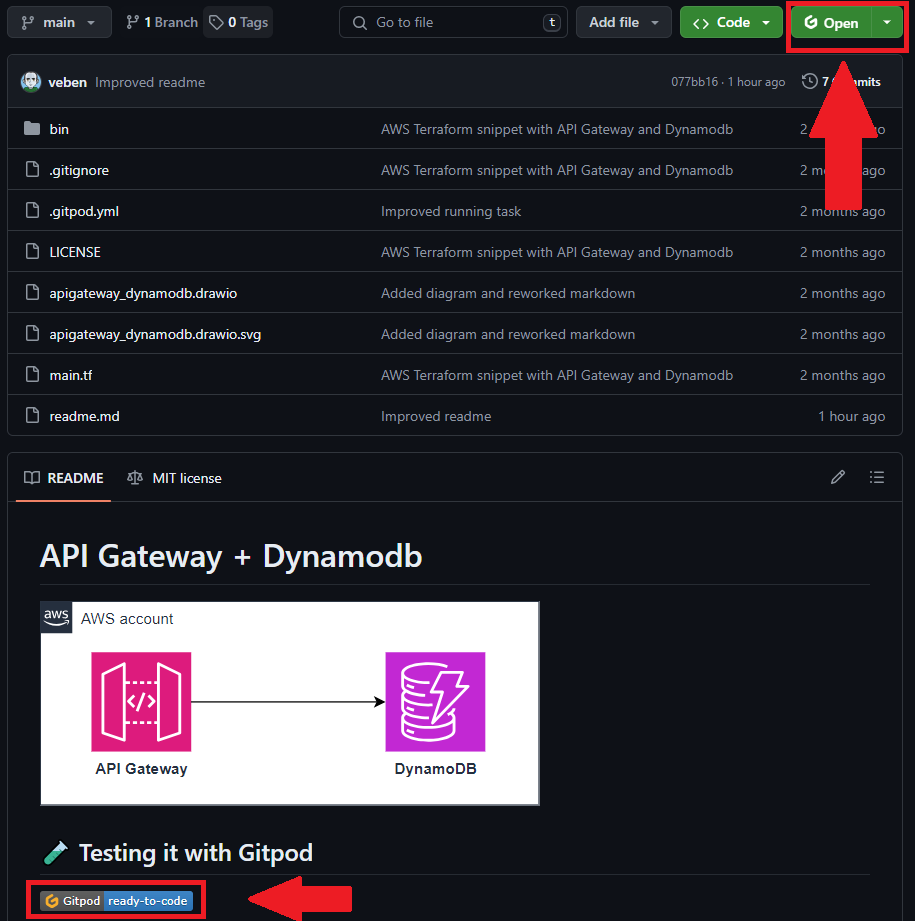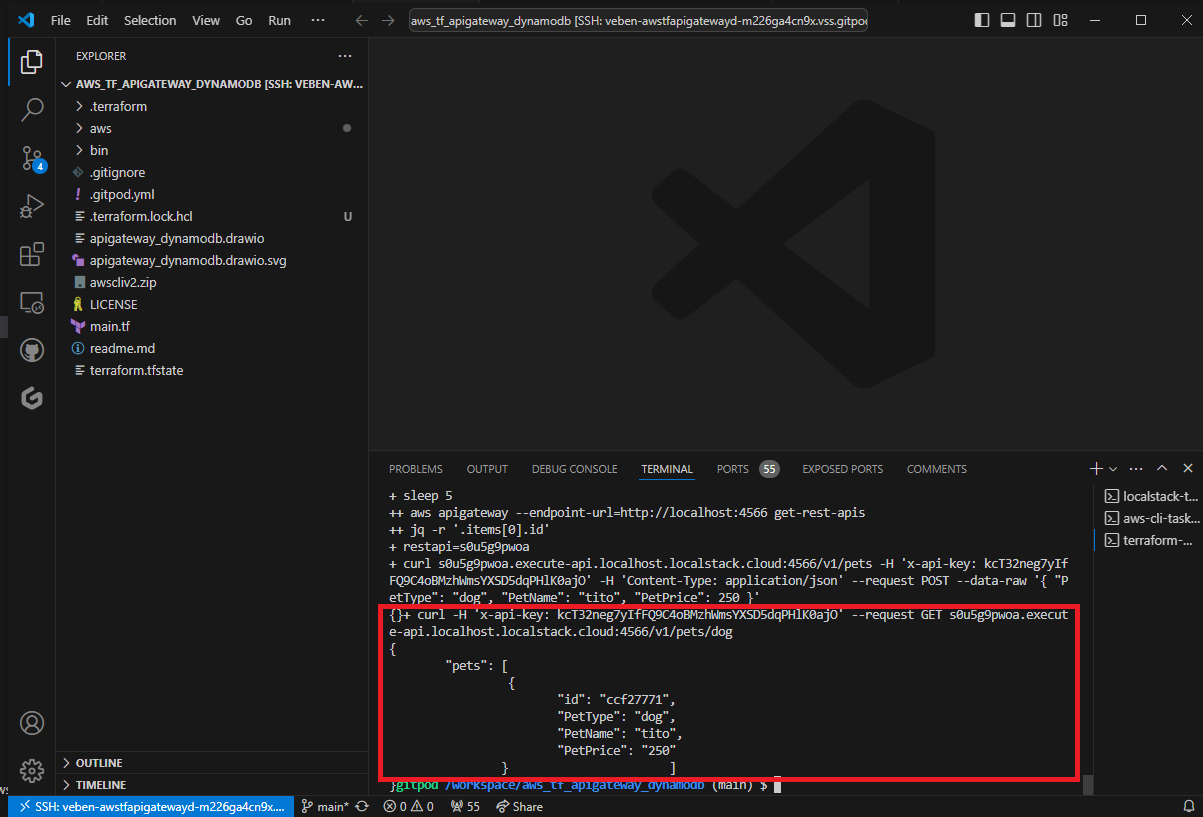Developing and testing AWS applications with Gitpod
Gitpod offers a simple way to spin up ready-to-code development environments directly from your browser. In this post, we’ll walk you through how to use Gitpod to set up a development environment for deploying an AWS infrastructure pattern using Terraform.
We’ll build on the pattern explained in this previous post, which allows deploying a simple infrastructure composed of API Gateway and DynamoDB at no cost with LocalStack and Terraform.
What is Gitpod?
Gitpod is an online IDE that provides automated, pre-configured development environments. It enables developers to work efficiently by eliminating the setup time for development environments and ensuring consistency across different setups.
Prerequisites
Before you start, ensure you have a GitHub account and access to the Gitpod service. You can sign up for a free Gitpod account here.
To begin, start from this repository containing terraform files to deploy a simple pattern.
Configuration
Inside your repository, create .gitpod.yml file to configure your Gitpod environment with the following tasks:
- Installing and starting LocalStack.
- Installing the AWS CLI and the
awscli-localwrapper. - Installing Terraform and the
terraform-localwrapper and running a custom script to:- create the infrastructure on LocalStack with Terraform
- retrieve the API key from terraform output
- retrieve the API id
- insert data into DynamoDB via the POST API
- request the inserted data via the GET API
Additionally, configure a range of ports to be exposed to make the pod accessible.
Here is the .gitpod.yml configuration:
tasks:
- name: localstack-task
init: |
python -m pip install localstack
command: |
. ~/.bash_profile
docker network create localstack
localstack start
- name: aws-cli-task
init: |
curl "https://awscli.amazonaws.com/awscli-exe-linux-x86_64.zip" -o "awscliv2.zip"
unzip awscliv2.zip
sudo ./aws/install
pip install awscli-local
- name: terraform-wrapper-task
env:
AWS_ACCESS_KEY_ID: "dummy"
AWS_SECRET_ACCESS_KEY: "dummy"
AWS_DEFAULT_REGION: "eu-west-1"
init: |
curl -fsSL https://apt.releases.hashicorp.com/gpg | sudo apt-key add -
sudo apt-add-repository "deb [arch=amd64] https://apt.releases.hashicorp.com $(lsb_release -cs) main" -y
sudo apt-get update && sudo apt-get install terraform
yes | pip install terraform-local
command: |
. ~/.bash_profile
bash bin/run.sh
ports:
- port: 3000-8999
onOpen: ignore
And here is the run.sh script:
#!/usr/bin/env sh
set -x
tflocal init; tflocal plan; tflocal apply --auto-approve
apikey=$(tflocal output -json | jq -r .apigw_key.value)
sleep 5
restapi=$(aws apigateway --endpoint-url=http://localhost:4566 get-rest-apis | jq -r .items[0].id)
curl $restapi.execute-api.localhost.localstack.cloud:4566/v1/pets -H "x-api-key: ${apikey}" -H 'Content-Type: application/json' --request POST --data-raw '{ "PetType": "dog", "PetName": "tito", "PetPrice": 250 }'
curl -H "x-api-key: ${apikey}" --request GET $restapi.execute-api.localhost.localstack.cloud:4566/v1/pets/dog
Launching
To launch the Gitpod environment, add https://gitpod.io/# before your repository URL. For our example it is https://gitpod.io/#https://github.com/veben/aws_tf_apigateway_dynamodb.
You can also configure a button in the README.md of the repository, or install Gitpod browser extension to create a button on top of repository code.

Then you can open the environment directly in your browser or in VSCode if you install the Gitpod extension.

Each task runs in a dedicated terminal.
You can see the result of the last command, which is the requested data from DynamoDB via the GET API.
Conclusion
By following these steps, you’ve successfully set up a Gitpod environment to develop and test AWS applications locally using LocalStack, AWS CLI, and Terraform. This setup ensures you can efficiently build and test your infrastructure without incurring AWS costs.
The associated code is available here
